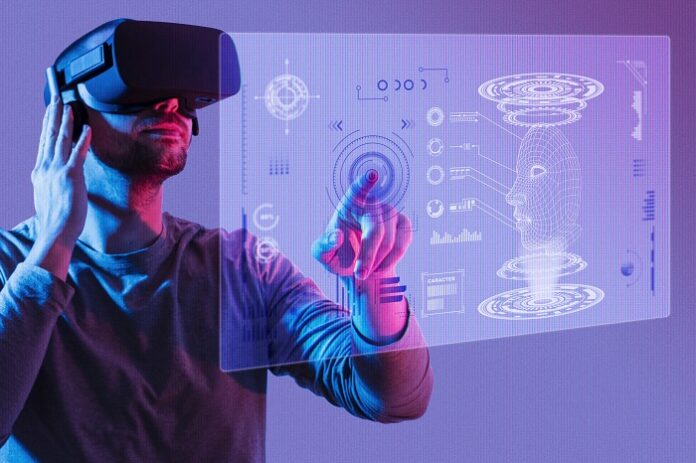In the rapidly expanding universe of virtual reality (VR), enthusiasts from all walks of life are drawn into this immersive world. However, navigating this frontier can be daunting, especially for newcomers. Understanding the nuances of VR support is crucial for anyone looking to maximize their experience in this digital landscape. From selecting the right equipment to overcoming common challenges, this guide is a beacon for VR explorers, illuminating the path to a seamless and enriching virtual journey.
The first step in any VR trip is selecting the appropriate headgear. The market provides various options, from high-end versions like the Oculus Rift and HTC Vive to more affordable ones like the Oculus Quest and PlayStation VR. Each headset has advantages and disadvantages. High-end models provide higher visuals and tracking but frequently necessitate a powerful PC and a specialized play area. On the other hand, standalone headsets offer greater flexibility and convenience of usage while sacrificing some performance aspects. When making this decision, remember your budget, available space, and desired experiences.
After you’ve decided on a headset, the following step is to configure it. This can be daunting, but most manufacturers give extensive setup manuals. Key considerations include optimizing the tracking environment, adjusting the headset for comfort and clarity, and ensuring your PC (if applicable) satisfies the appropriate specs. Investing time in this initial setup can greatly improve your VR experience, reducing concerns like motion sickness and technical errors.
Another key part of VR is navigating the software ecosystem. Understanding the various platforms for purchasing and launching games and programs, such as SteamVR, Oculus Store, and PlayStation Store, is essential. Becoming acquainted with these platforms and their user interfaces is critical to have a smooth VR experience. Furthermore, updating your software and firmware is essential for performance and security.
The realm of VR gaming provides a diversity of genres and experiences for gamers. However, getting started with VR gaming might be intimidating. Starting with simpler, more intuitive games might help you adjust to the unique gameplay dynamics of VR. It’s also critical to be aware of the physical requirements of VR gaming. Unlike traditional gaming, VR frequently requires extensive movement; thus, ensuring a safe, obstacle-free play space is critical.
Motion sickness is a major issue in virtual reality. This can be avoided by beginning with shorter sessions and progressively increasing duration as you feel more comfortable in the VR experience. Some people find respite by applying motion sickness cures or altering in-game settings to lower the intensity of the motion. Remember that everyone’s tolerance to VR differs, so listen to your body and take breaks as needed.
Another critical part of VR is equipment maintenance. Cleaning the headset lenses and controls regularly, managing wires safely to avoid tripping hazards, and correctly storing your equipment when not in use can all help extend its longevity and improve your experience. Additionally, ergonomic equipment such as cushioned straps or floor mats can considerably enhance comfort during long periods.
VR is more than a gaming platform; it’s also a blossoming industry for social engagement, education, and professional applications. Platforms such as VRChat and AltspaceVR enable virtual socialization, while educational applications alter how we learn and interact with knowledge. Professionals are increasingly using VR for training, design, and remote collaboration. Understanding these various applications can substantially extend your view of VR’s possibilities.
VR’s community aspect is also worth investigating. Online forums, social media groups, and VR meetings can be excellent sources of information, troubleshooting advice, and new content. Participating in the VR community expands your knowledge and connects you with other enthusiasts who share your enthusiasm.
Looking ahead, VR technology continues to advance at a rapid pace. Staying up to date on the newest advances, whether it’s new headset releases, software updates, or upcoming applications, can help you stay ahead in this fast-paced industry. Virtual reality offers limitless opportunities, whether you’re a gamer, professor, professional, or simply a curious explorer.
VR has enormous potential in art and creativity and the realms already explored. Emerging VR tools enable artists and designers to create in three dimensions, transforming traditional methods into art. For example, Tilt Brush and Gravity Sketch allow users to paint and sculpt in VR, providing spatial freedom unrivaled by any canvas or design software. For artists, this implies being able to create new kinds of art and go inside their creations, providing a unique creative experience. As these tools improve, the convergence of VR and art will become a blooming frontier, fusing technology and creativity in unforeseen ways.
Conclusion
Virtual reality’s vast and thrilling arena stretches beyond entertainment and games, impacting different facets of our lives, ranging from social contact to education, professional training, and artistic expression. As virtual reality technology advances, its potential uses expand, promising to alter how people interact, learn, work, and create. For both enthusiasts and newbies, this is a never-ending journey of discovery, with each step into virtual reality opening up new frontiers and possibilities. The future of virtual reality is about unlocking new dimensions of human experience, creativity, and connection, not just technology improvement.
Image by pikisuperstar on Freepik





